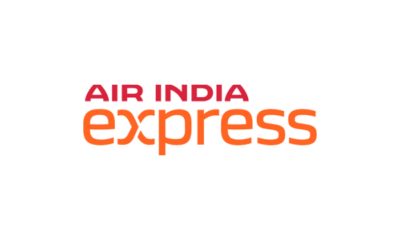With a growing middle class and increasing air travel demand, the Indian aviation industry is going through a massive change. India is expected to surpass China and the US to become the world’s third largest air passenger market by 2030, according to IATA. With the demand rising, the number of planes in the sector is increasing. The number of planes is expected to touch 1,100 by 2027. As per market estimates, the Indian aviation sector is expected to grow 18-20% year on year in FY26. The biggest airlines in India are IndiGo, Air India, Akasa Air and SpiceJet, each with their own business model.

Table of Contents
During the last 10 years, the country has doubled the number of departing seats to 23 crore. This growth has been suitably aided by Government initiatives, such as the Regional Connectivity Scheme (RCS-UDAN) which has resulted in enhanced regional connectivity and improved infrastructure in underserved areas. Starting in October 2016, the UDAN scheme has been extended for another 10 years, giving thrust to airport modernization and technology integration. The government aims to increase the number of airports in India from 157 to 400 by 2047.
Read Also: Top Drone Companies in India
Top 4 Airlines in India
1. IndiGo – Richest Airlines in India

IndiGo Airlines (officially InterGlobe Aviation) is the largest airline in India in terms of number of passengers carried and fleet size. As of Jan 2025, IndiGo airlines market share stands at 62%. IndiGo has a passenger load factor of 90.9%. Known for its operational efficiency and low cost model. As of April 2025 IndiGo operates over 2,200 daily flights to 125 destinations—90 domestic and 35 international. In FY25 IndiGo carried 11.3 crore passengers. To attract premium travellers IndiGo has launched ‘IndiGo Stretch’ which is a business class service on select routes with competitive pricing and meals by Oberoi Hotels. IndiGo has been consistently recognized for its service. It was awarded ‘Best Low-Cost Airline in India and South Asia’ at 2023 World Airline Awards.
Its unique low-cost business model relies on three attributes:
- Low Fares: IndiGo is known for cheap without compromising on service.
- On-Time Performance: They have a reputation for being on time which is a big factor for travelers. In April 2025, IndiGo had an on-time performance (OTP) of 74.6%.
- Hassle-Free Experience: IndiGo aims to provide a smooth travel experience with quick check-ins and minimal delays.
2. Air India (including AIX Connect): Largest Airlines in India

Air India – the former national airline of India – has low cost carriers as well as full service brands under its umbrella. The company has undergone a massive transformation since Tata Group acquired it in January 2022. As of April 2025, Air India has a market share of 27.3% it is the second big player in Indian aviation.
Air India Express merged with AirAsia India in October 2024. Then on 12 November 2024 Vistara was also merged with Air India. The airlines carried approximately 4.05 crore passengers across 800 daily flights to 55 domestic and 44 international destinations during the fiscal year 2023-24. Air India has 198 aircraft in total and 374 on order. Air India has an on-time performance of 63.5% and a passenger load factor of 93%
Once a symbol of excellent customer service, Air India has seen its reputation go down due to mismanagement over the years. Despite this decline, the efforts to modernize the fleet and operational processes and Air India’s long history gives it a chance to recover and rebuild its service excellence.
Read Also: FlySBS Upcoming IPO
3. SpiceJet: Top Airlines in India

SpiceJet is another low cost carrier in India, known for its cheap fares and efficient operations. It operates many domestic routes connecting major cities across the country. SpiceJet was known for its comfortable seating, on time performance and friendly customer service. The company is currently facing a big operational crisis with flight cancellations, financial woes and legal issues.
As of April 2025, Spicejet operates 250 flights to 48 destinations daily. Spicejet has 81.6% on time performance and 95.6% passenger load factor. SpiceJet has 91 aircraft in its fleet. While it doesn’t offer the same level of amenities as full service airlines, it’s a reliable and affordable option for budget travelers.
Read Also: Best Beer Brands in India
SpiceJet’s Customer Experience
- Service Challenges: SpiceJet has been criticized for its service quality, it ranks lowest in customer satisfaction surveys. A recent survey said 79% of passengers found SpiceJet’s service unsatisfactory, citing flight delays and poor in-flight service
- Target Audience: SpiceJet attracts leisure travelers with competitive pricing and promotions. But its financial troubles and operational inefficiencies have created negative perception among customers
- Focus on Technology: The airline is trying to improve customer experience through automation and technology but struggling to implement due to financial issues.
Read Also: Best Air Purifier for Home in India
4. Akasa Air: Top International Airlines in India

Akasa Air is a new entrant in the Indian aviation market, founded in 2021 by industry veterans Vinay Dube and Aditya Ghosh with significant investment from Rakesh Jhunjhunwala. Aditya Ghosh was the president and whole-time director of IndiGo from 2008 to 2018 where he made it the largest and most profitable airline in India and Vinay Dube was the CEO of Jet Airways and GoAir (now Go First). Under the leadership of both, the company seeks robust growth in upcoming years
The airline commenced operations on 7 August 2022, focusing on providing low-cost air travel. Akasa Air operates an all-economy configuration on Boeing 737 MAX aircraft which allows for higher passenger capacity. As of April 2025 Akasa Air’s on time performance is 73.7% and passenger load factor is 93.3%.
Akasa Air currently operates a fleet of 27 aircraft. The airline plans to add 30 Boeing 737 MAX aircraft by July 2025 with 28th aircraft arriving this month. They don’t include in-flight meals in their base fare, instead they have a buy-on-board service through Café Akasa. Since launch Akasa Air has faced operational issues including flight cancellations and staffing issues. Some passengers have also reported delays and unprofessional staff behaviour.
Apart from all these big airlines in India, some top international airlines in India are also popular. This includes names like Etihad Airways, Lufthansa Airlines, and Qatar Airways.
Read Also: Top Automobile Companies in India
Conclusion – Biggest Airlines in India
The Indian aviation sector is moving fast with big players like IndiGo, Air India, SpiceJet, Vistara and Akasa Air shaping the landscape. IndiGo has 62% of the airlines in India and is all about low cost and customer service. Air India under Tata Group is reviving and has 28.8% market share and is adding more planes to its fleet. SpiceJet is facing operational issues, Vistara is all about premium service and Akasa Air is trying to attract budget travelers despite the early operational hiccups. The future looks good as the industry adjusts to growing demand and government is enhancing connectivity.
Biggest Airlines in India FAQs
What are the best airlines in India for domestic travel?
IndiGo and Vistara are considered the best airlines in India for reliable and comfortable domestic flights.
Who are the richest airlines in India today?
he richest airlines in India include IndiGo, Air India, and Vistara, known for strong networks and fleet size.
Are the top 10 international airlines in India affordable?
Yes, many of the top 10 international airlines in India offer competitive fares with quality service and comfort.




































